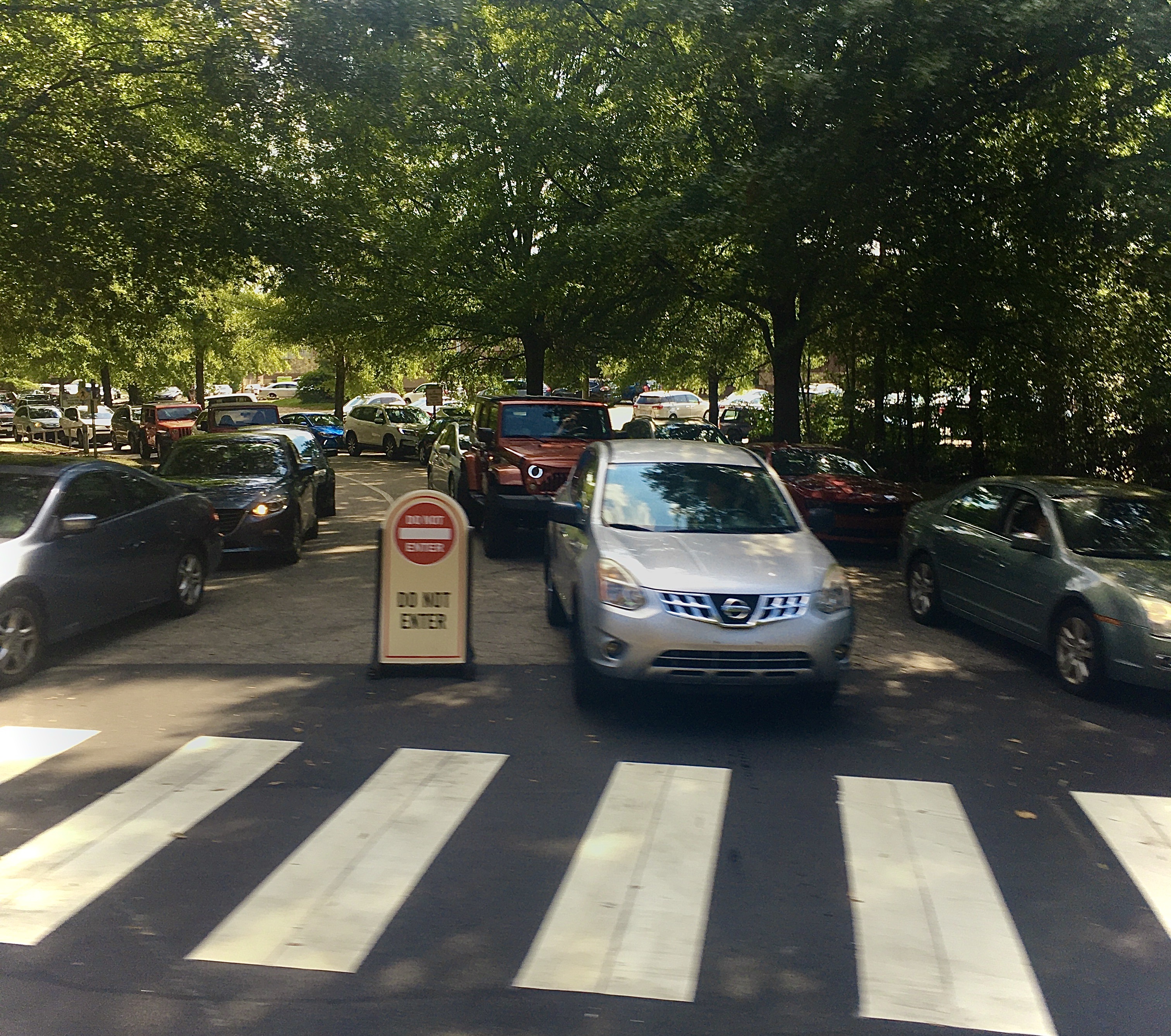Leesville students beginning to leave campus after a day at school. These are just the first few student drivers of hundreds that were lucky to get out of the parking lot before the crowd. (Photo courtesy of Alexis Taylor)
By senior year, a good majority of high school students already have their driver’s licenses. With license in hand, many students choose to drive to school. That privilege has an upfront known cost. But for a larger school like Leesville Road High School, there are sometimes other hidden costs that have an impact as well.
LRHS has 600 parking spaces for students. To park in the student parking lot, each driver pays $200 per year.
According to LRHS’ bookkeeper, Mrs. Mary Koch, all lots for the 2018-2019 year were full by February. That means by the middle of the school year, there were 600 students driving to and from Leesville High School, essentially every day. So many students chose to drive to school, despite the fact that Wake county provides transportation to and from LRHS in the form of 35 bus routes. As any student driver well knows, that many students entering or leaving the campus can cause serious congestion on two-lane roads like Oneal Road or Leesville Road.
Not only does this congestion of the roads cause traffic jams, but it is also a safety concern. According to Edgar Snyder & Associates, a personal injury law firm, auto accidents are the leading cause of death for teens ages 15 to 20. Over the years, there have been a number of student-related accidents in the Leesville area. One recent student-involved accident involved a school bus.
On September 20, on the morning route for bus Route 1, a slight bump in the rear by a student driver kept 19 students out of their first period classes. One of the students on the bus at the time of the accident was Arora Belisario, freshman. “To be honest, it was a nice break from morning class. Also, I made new friends, so maybe it was good.”
While having to miss first period may sound pretty good for some people, it does have its consequences. “I missed a test and had to make it up like a week after. It was annoying chasing down the teacher all the time trying to get her to give me my test because it was [marked] a zero,” said Belisario.
Another concern with having a large number of student drivers is the environmental impact. According to cartalk.com, an automobile enthusiast website, burning one gallon of gas in a car creates 20 pounds of carbon dioxide, a common greenhouse gas that contributes to climate change. If Leesville ultimately has 600 student drivers each week and each driver uses just one gallon of gas driving to and from school weekly, then student drivers pump 12000 pounds of carbon dioxide into the air each week.
For many students, driving to school is a convenience. But every convenience has its price.

Hi! My name is Alexis Taylor, and I’m a staff writer for The Mycenaean. I am also a volunteer video editor for my church. I love older music, TV shows, and movies!

Leave a Reply